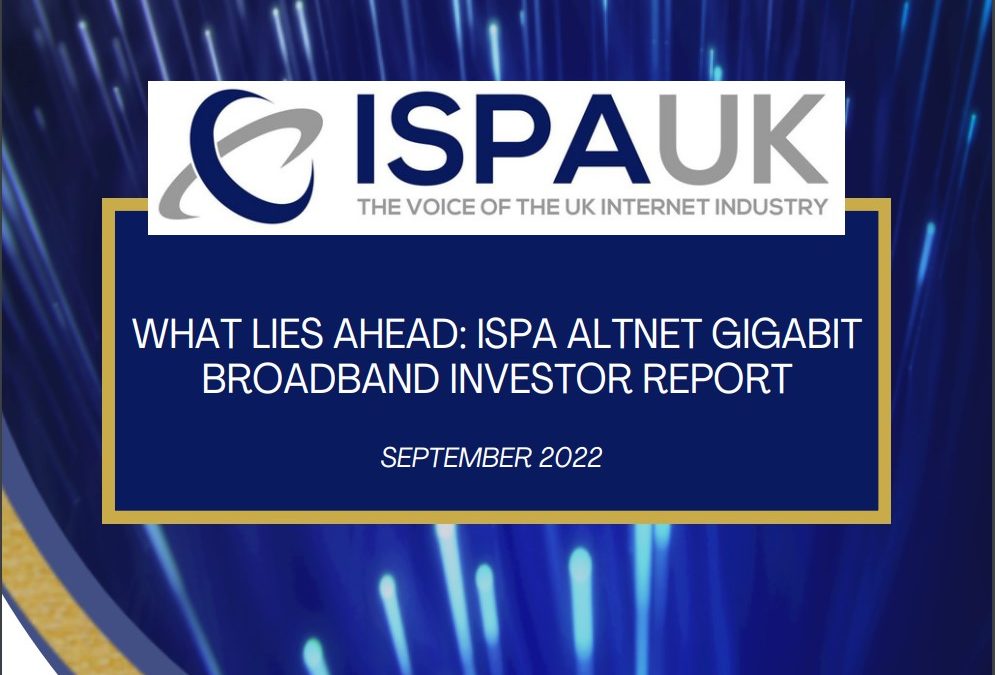New research from the Internet Services Providers’ Association (ISPA), based on interviews with leading investors in broadband, indicates changes are ahead for the broadband market. From fewer new market entrants and a period of consolidation, to a more challenging environment to raise investment and a greater emphasis on commercialising the infrastructure in the ground, the findings outline some of the key trends impacting the market.
The UK broadband market is at an exciting point thanks to the investment and rollout plans of scores of providers deploying full fibre and gigabit capable broadband nationally. This has helped push the UK to 39% full fibre and 70% gigabit capable broadband coverage, up from 9% just 3 years ago. This rollout has been led by long established providers, Openreach and Virgin Media, but also ‘altnets’, the newer players in the market deploying nationally, regionally or locally, primarily as both an ISP and infrastructure builder.
The report paints a positive picture for consumers and businesses, with an upgraded communications infrastructure powering the UK, providing greater choice at infrastructure and retail level. ISPs will have to work hard to differentiate themselves from the competition as gigabit services become more widespread. Some significant upcoming developments – including the launch of One Touch Switch to enable seamless switching across different broadband infrastructure in Spring 2023 – will help encourage greater take up of gigabit services.
The ability to access finance has been a key part of the story. More than 30 billion pounds of private investment is being invested. As the market starts to mature, with more and more fibre in the ground or committed and further rounds of investment being sought, debate has turned to what this maturity means for industry, customers, government and investors.
As we move into this next stage, there are several key findings from the research that help inform where we may go next:
- The huge progress made by the sector in a short space of time should be applauded - scores of companies have taken it upon themselves to roll up their sleeves and improve the UK’s communications infrastructure.
- The market has now reached saturation point, and there are unlikely to be many new entrants in the near future.
- A period of consolidation is now widely expected and this is generally viewed as a natural, healthy part of market development.
- Providers looking for further rounds of investment are likely to find a different landscape to the one in which they raised their original funding.
- Investors now take a keener interest in the relationship between providers and their customers, building on total homes passed and cost per premises passed to focus on homes connected and average revenue per user (ARPU).
- To help secure long-term funding from investors, providers must differentiate their services from competitors. As gigabit speeds cease to be a key determining factor for consumers, providers must think creatively about what they offer to customers.
- The impact of consolidation is also likely to mean a greater role for wholesale in the future, and the increase in infrastructure competition of recent years will mean consumers will have a greater choice of options.
- Fibre-to-the-Premise (FTTP) take-up will be supported by key developments in the broadband industry, such as Ofcom’s introduction of a ‘One Touch Switch’ initiative by April 2023.
- The policy environment can best support fibre rollout by removing red tape and barriers to deployment and the regulator should take a greater account of greater infrastructure competition brought about by the market.
The report, What Lies Ahead, can be accessed in full here
Sponsored by


